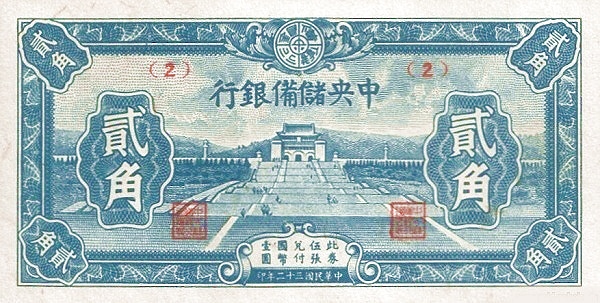The cultural identity of the Qing ruling elite defines whether we see China as having been ruled by a continuous succession of Han Chinese dynasties or governed by other culturally distinct groups. Did the elite in the Qing dynasty, the Manchu and Mongol bannermen who had conquered China, assimilate into the majority Han culture? In her recent LSE PhD thesis Nora Yitong Qiu investigates the identity of the Qing dynasty’s ruling elite (1644-1912). Records of their possessions that survive when they were confiscated by the emperor suggest that many members of the elite preserved a distinctive non-Han cultural identity, developing a new “Qing” cultural identity. It does not seem that the Chinese region has been ruled by a continuous succession of culturally Han dynasties.
The identity of the Qing ruling elite defines how we understand China’s history. Was China ruled for millennia by a continuous succession of Han dynasties, rooted in the culture of the largest ethnic group, or was it governed by other distinct groups? Scholars in the Boasian school of anthropology argue that the Manchus who conquered and ruled Qing China were fully absorbed by the Han culture and that the Qing dynasty was culturally a Han dynasty.[1] In Qing China the Han made up 97% of the population. Assimilation into this overwhelming majority therefore seems reasonable. Historian Karl A. Wittfogel disagreed. He proposed that separate rules for elites and commoners, distinguished by the ruling group’s cultural identity, characterized the conquest dynasties of the Liao Khitans, the Jin Jurchens, the Yuan Mongols, and the Qing Manchus.
Did the Manchus and the Mongol bannermen, elite in the Qing dynasty, assimilate into the majority Han culture? Or did their distinctive cultural identity persist?

We can draw conclusions about the culture of the elite during the Qing dynasty by looking at what they owned. Our possessions are one of the hallmarks of our identity. Evidence of what China’s elite owned survive because the Qing emperor would show his power by confiscating their goods. These confiscations produced detailed inventories of elite families’ household goods, allowing us to see how they furnished their houses and how they dressed. Records of the goods confiscated by the emperor suggest that in some ways elites preserved their cultural identity while in other ways elites constructed a new “Qing” identity.

The inventories show that Manchu and Mongol bannermen who sat atop the social hierarchy of Qing China mostly kept their own proto-ethnic identity. For example, the Manchu and Mongol bannermen acquired luxurious furs to wear as clothing, and other status-signalling goods based in Manchu and Mongol cultures, such as hunting rings. The Manchu bannerman would decorate his house with bows and arrows hanging on the walls of the living room. He would cover his hardwood furniture with fur and surround himself with rare luxurious decorations made from manas jade and gifts from tributary missions. A policy allowing them to settle in garrisons during the 19th century encouraged them to own more goods, and in this they were heavily influenced by the taste of the court: access to imperially controlled goods, such as eastern pearl and certain types of jade, gave their homes a distinctive identity, and their ethnic styles also dominated male fashion in public.
In fact, rather than Manchu assimilation, it was Han Chinese scholar-officials, who had passed the civil service examinations and occupied high government posts who owned more of the Manchu and Mongol cultural goods than vice versa. They also owned imperially controlled goods, though in much smaller quantities than the Manchu and Mongol bannermen. And Han scholar-officials mimicked the clothing fashions of Manchu bannermen, wearing rare fur clothes and banzhi (扳指) archery rings when they appeared in public.
At home, however, Han scholar officials decorated their houses in the style of the Han literati. For example, Dai Junyuan (1746-1840), a first tier Jinshi degree holding official from Jiangxi province, Grand Secretary of the Grand Secretariat, collected antiques, famous Chinese calligraphy and paintings made by Ming artists, books ranging from history to Confucius studies, and ritual objects including Buddhist statues, Guanyin statues, sangong (三供) — three set worship utensils, and wugong (五供) — five set worship utensils. Affluent Han commoners aspired to the scholar-officials’ private tastes.
Qing material culture was not fixed. All Qing elites seem to have appreciated the foreign goods that became increasingly available over these centuries. Most affluent Han officials and Manchu and Mongol bannermen owned foreign luxury goods such as clocks, watches, foreign lacquerware, foreign porcelain, and glassware. In the 18th century these luxury goods entered Qing China as gifts given by merchants and diplomats from Europe, Japan, the New World, and Russia. The Qing elite were open to foreign ways of living and incorporated these objects into their daily lives. This open culture indirectly facilitated the late Qing’s efforts to modernise the republic.
The Qing elite maintained their proto-ethnic cultural identities throughout the Qing period. Indeed, I find little to suggest Manchu and Mongol bannermen assimilated into the majority Han culture. If one was Manchu or Mongol, one continued to decorate one’s home and oneself in Manchu and Mongol goods and clothing. Affluent Han elites owned Manchu and Mongol clothing, though they continued to invest in Han cultural goods, such as books, antiques, and paintings. The less affluent a Han was, the less that individual or family collected Manchu and Mongol cultural items. In public the Qing elite did share some similarities in clothing styles and preferences for foreign goods, suggesting a new hybrid “Qing” culture, but in private elites kept to their proto-ethnic cultural identity. It does not seem that the Chinese region has been ruled by a succession of culturally Han dynasties.
References
[1] Huang, Reorienting the Manchus; Wang, Qingdiguo Xingzhi de Zai Shangque清帝國性質的再商榷.




